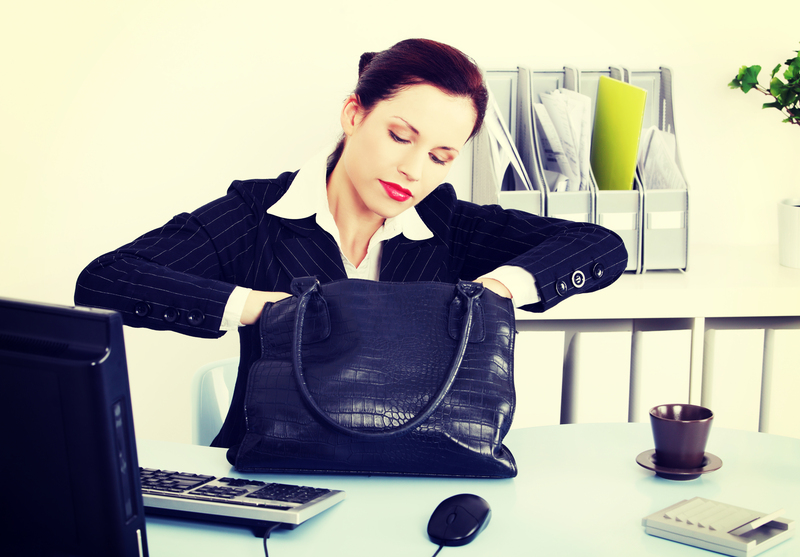Health and Safety: The Power of Cleaning Supplies
Posted on 08/05/2025
Maintaining a clean and safe environment is crucial for health and safety, whether it's in the home, office, industrial settings, or public spaces. Cleaning supplies play a vital role in achieving this goal, providing tools and solutions designed to eliminate dirt, germs, and potential hazards. In this comprehensive article, we will delve into the importance of cleaning supplies in health and safety, explore various types of cleaning products, and offer guidelines for their use to maximize effectiveness and safety.
The Importance of Cleaning Supplies
Cleaning supplies are indispensable in maintaining sanitation, hygiene, and overall health. Here's why:
1. Disease Prevention
One of the primary roles of cleaning supplies is to prevent the spread of infectious diseases. Surfaces that are frequently touched, such as doorknobs, countertops, and light switches, can harbor dangerous pathogens. Disinfectants and antibacterial cleaners are specifically formulated to kill these germs, reducing the risk of illnesses such as the flu, colds, and other communicable diseases.
2. Allergy Reduction
Dust mites, pollen, pet dander, and other allergens can accumulate in our living and working spaces, leading to respiratory problems, skin irritations, and other allergic reactions. Regular cleaning with appropriate supplies can significantly reduce the presence of these allergens, promoting better respiratory health and overall well-being.
3. Occupational Safety
In workplaces, especially those involving heavy machinery or hazardous materials, the cleanliness of the environment can directly impact worker safety. Cleaning products designed to remove grease, oil, and other residues prevent accidents such as slips, trips, and falls. Moreover, specialized cleaning agents are essential in industries such as healthcare and food service, where sanitation is critical.

Types of Cleaning Supplies
The market offers a wide range of cleaning supplies, each tailored to specific cleaning tasks and environments. Here are some common categories:
1. Disinfectants and Sanitizers
These products are designed to kill bacteria, viruses, and fungi on surfaces. Disinfectants are often used in healthcare settings, while sanitizers are commonly used in food service and household environments. Popular active ingredients include bleach, alcohol, and quaternary ammonium compounds.
2. Detergents
Detergents are formulated to remove dirt, grease, and stains from various surfaces. They can be used in laundry, dishwashing, and general cleaning applications. Detergents work by breaking down the molecular structure of dirt, making it easier to wash away.
3. Abrasives
Abrasive cleaners contain particles or chemicals that physically scrub away tough stains and grime. They are often used in kitchens and bathrooms to clean sinks, tubs, and countertops. However, they should be used with caution as they can scratch delicate surfaces.
4. Glass Cleaners
Specially formulated to clean glass and mirrors without leaving streaks, these cleaners typically contain solvents and detergents that dissolve dirt and grease while evaporating quickly for a shiny finish.
5. Specialty Cleaners
These include products designed for specific cleaning tasks, such as oven cleaners, carpet cleaners, and stainless steel cleaners. They are often formulated to tackle specific types of dirt or stains that standard cleaners might not handle effectively.
Guidelines for Safe and Effective Use of Cleaning Supplies
While cleaning supplies are essential for maintaining health and safety, improper use can lead to adverse effects. Here are some guidelines to ensure their safe and effective use:
1. Read and Follow Instructions
Always read the labels on cleaning products and follow the manufacturer's instructions. This includes information on dilution ratios, contact times, and safety precautions. Misuse of cleaning supplies can reduce their effectiveness and pose health risks.
2. Use Protective Gear
Many cleaning products contain chemicals that can irritate the skin, eyes, or respiratory system. When using these products, wear appropriate protective gear such as gloves, goggles, and masks to minimize exposure and potential health risks.
3. Ensure Proper Ventilation
Using cleaning supplies in confined or poorly ventilated spaces can lead to the accumulation of fumes, which can be harmful if inhaled. Always ensure adequate ventilation by opening windows or using exhaust fans to disperse any harmful vapors.
4. Store Cleaning Supplies Safely
Store cleaning products in their original containers and keep them out of reach of children and pets. Proper storage prevents accidental ingestion or exposure and ensures that the products maintain their effectiveness.
5. Dispose of Products Responsibly
Some cleaning supplies contain hazardous materials that should not be disposed of down the drain or in regular trash. Follow local regulations for the disposal of hazardous waste to protect the environment and public health.

Eco-Friendly Cleaning Supplies
As awareness of environmental issues grows, many people are opting for eco-friendly cleaning supplies. These products are designed to minimize environmental impact while still providing effective cleaning solutions. Key features of eco-friendly cleaning supplies include:
1. Biodegradable Ingredients
Eco-friendly cleaning products often contain biodegradable ingredients that break down naturally, reducing pollution and harm to aquatic life. Look for products labeled as biodegradable or environmentally friendly.
2. Non-Toxic Formulations
These products avoid the use of harsh chemicals, making them safer for both users and the environment. They often rely on natural ingredients such as vinegar, baking soda, and essential oils.
3. Reduced Packaging
Many eco-friendly cleaning supplies come in minimal or recyclable packaging to reduce waste. Additionally, some brands offer refillable containers to further minimize the environmental footprint.
4. Certification Labels
Look for cleaning products that carry certification labels such as EPA Safer Choice, Green Seal, or EcoLogo. These labels indicate that the product has been independently tested and meets specific environmental and safety criteria.
Conclusion
Cleaning supplies are crucial tools in maintaining health, safety, and sanitation across various environments. From preventing disease and reducing allergens to ensuring occupational safety, the role of these products cannot be overstated. By choosing the right cleaning supplies and using them correctly, we can create cleaner, safer, and healthier spaces.
As we move towards a more sustainable future, opting for eco-friendly cleaning supplies can further enhance our efforts to protect both human health and the environment. By following the guidelines outlined in this article, you can ensure that your cleaning practices are effective, safe, and environmentally responsible.






